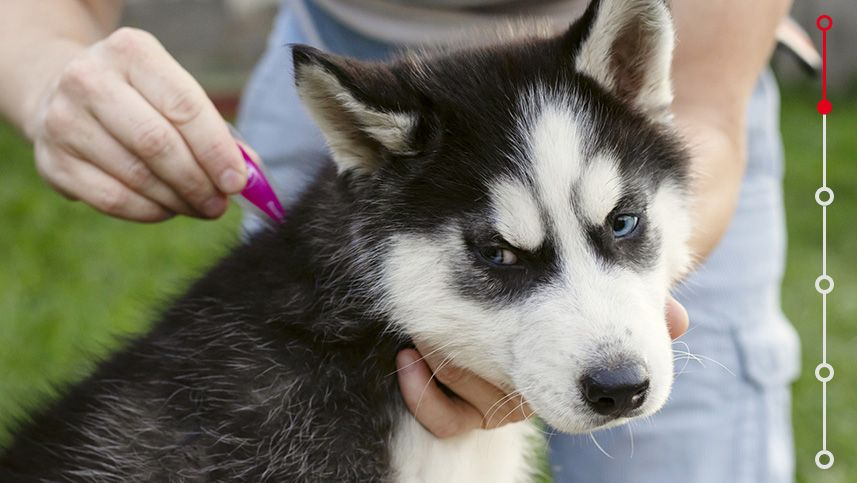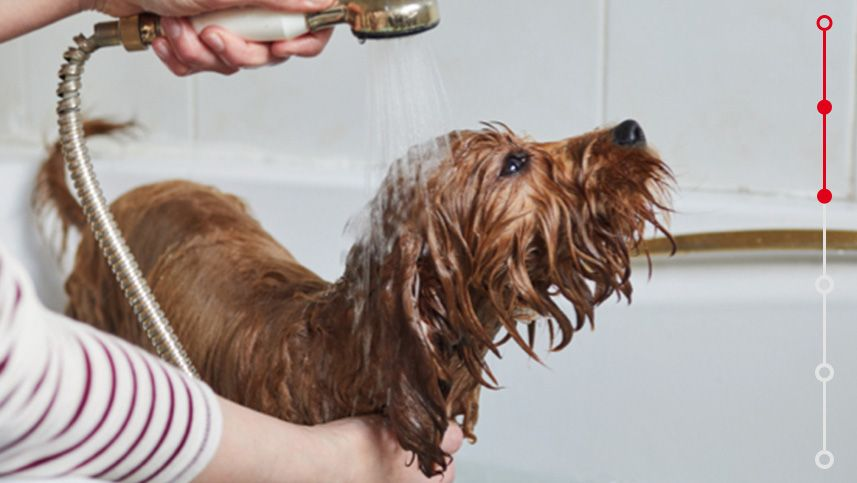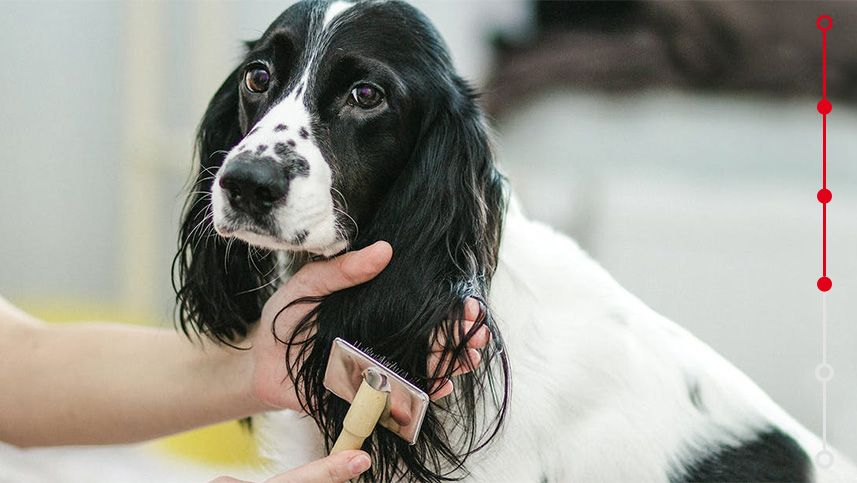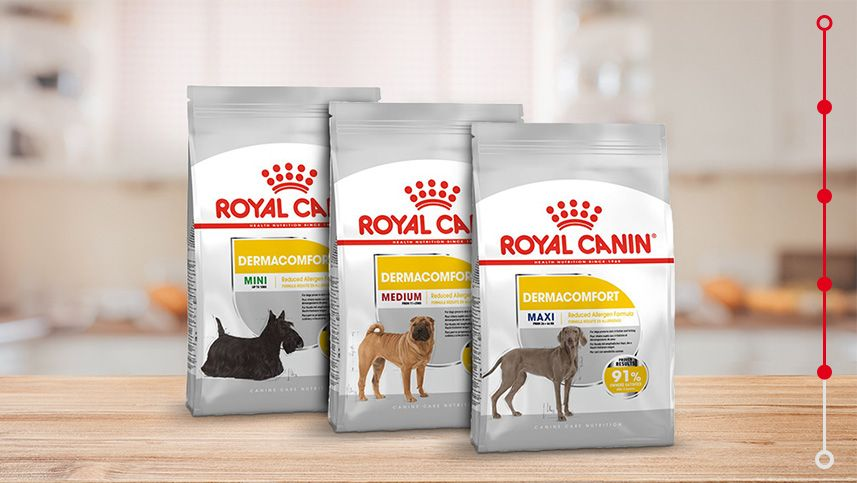Five-step skin and coat routine for a healthy dog!
Looking after your dog’s coat and skin is a great way to pamper them while looking after their health.
Article
Reading time3
1. Treat them right
Regular parasite prevention treatments tailored to your dog and recommended by a veterinarian can help keeping your dog safe from fleas, ticks, internal worms, and other nasties. If your dog has been infested, treat them and ask a vet about the possible measures to perform a thorough management (bed cleaning, treatment in the house environment, treating other pets, etc.).

2. Wash their troubles away
If your dog has a healthy skin, bathing them and cleaning their ears once a month may be all you need. Always use dog shampoo and avoid human products as they are not adapted to the same skin features (such as the pH). It’s also a good idea to check their ears daily when risks are high: during summer and swimming season or after walks in fields with grass seeds getting in your dog’s ears! If you think your pet is suffering from a skin condition, talk to your vet for advice.

3. Brush them regularly
Brushing your dog’s coat frequently helps to avoid matted fur and removes ‘dead hairs’ and potential foreign body. It’s a good opportunity to check for bites, redness or abnormal skin colouration, holes, and infections. Check their coat and ears for parasites or grass seeds after each walk.

4. Nurture and nourish
If your dog is prone to skin irritation and itching, a specific diet designed to help support and nourish their skin such as ROYAL CANIN® Dermacomfort range products can be an adapted nutritional solution. This formula supports overall health while nourishing sensitive skin with essential fatty acids Omega 3 and 6.

5. Ask the expert
Better safe than sorry, if you notice changes in the appearance of your dog’s skin or coat (greasy hair, scales, smelly fur…), a lump, or an unusual smell, ask your vet for advice on treatment, and nutrition adapted to their specific condition.

Related Articles
Like & share this page